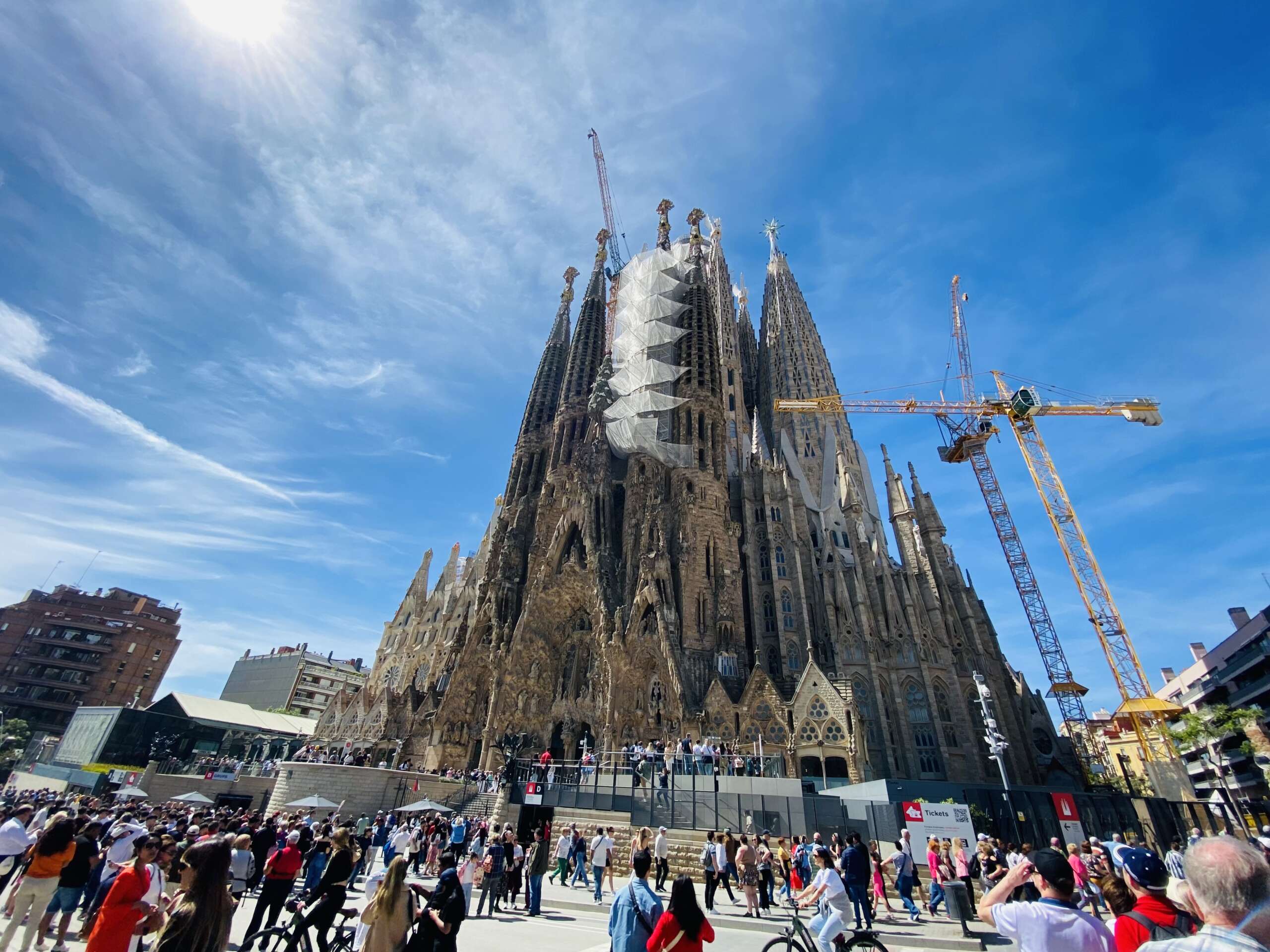
I am not sure they should include Barcelona on a cruise ship itinerary – 6 or 7 hours, even 24, is certainly not enough time to explore this incredible city. Unfortunately, 7 hours was all we had, so we made the most of it.

It’s a crisp, beautiful spring morning when the Resilient Lady pulls into Barcelona, Spains 3rd largest port. This being such an iconic European destination, everyone is keen to disembark. The provided shuttle bus that has us tumbling off at Barcelona’s World Trade Centre is packed as tight as a Taylor Swift concert. We have eschewed booking a tour here. We will instead use the Hop On Buses that have served us so well in so many other major cities. I’ve already purchased tickets and within 40 minutes of disembarkation, upstairs seats, wind in our hair, we are gazing out upon Barcelona’s beautiful blend of gothic and modern architecture, planning where to alight.

While the Gothic quarter and the Boqueria Market are high on our list, it’s Antoni Gaudí Sagrada Familia that holds the top position and accordingly, is where we alight first. It soon proves worthy of top position. This 142 year unfinished Catholic cathedral is Spain’s most visited landmark, and it’s thrilling to gaze upon its quirky spires, its Modernist gargoyles, its lumpy physique. George Orwell called the Sagrada Familia “one of the most hideous buildings in the world” and I can kind of see why. There is just a tiny degree of separation between this being a beautiful building and a hideous one. Fortunately, I lean towards the former.

The Sagrada Familia is a large building in a crowded city centre. It swarms with tourists, touts and transport. Is a relief to jump again aboard the Hop On Bus.

If you look at a map of Barcelona, you cannot fail to notice that the majority of the city is built in an obvious grid pattern. Long, wide streets dissect equal sized octagon blocks. Designed by urban planner Ildefons Cerda in the 1850s and 60s, this ‘Eixample’, as he called it, apparently allows for greater air circulation, facilitates transport and navigation, as well as allowing more natural light.
Whatever the reasoning, it did allow our bus easy access to more of Barcelona’s attractions such as the FC Barcelona Stadium, Casa Battlo (apartment building designed by Gaudi), the Magic Fountain, the sight of the 1992 Olympics, Las Ramblas (Barcelonas busiest street) and Placa de Catalunya (the meeting point of the old and new parts of the city).

There is only so much sitting, alighting, then sitting again, that one can take. Eventually, we farewelled the bus for good and started to make our own way on foot. It was a good decision, as we soon found ourselves in Barcelona’s Old Town. Comprising four barrios (neighbourhoods), outside of the city’s grid precinct and dating back to Roman times, these barrios are a maze of narrow twisting lanes, beautiful historic building, fabulous eateries and hidden alleyways.


With our love of older architecture, this part of the city was by far our favourite and should we return, will be the first place we revisit.
As I said at the beginning, seven hours is not enough time to explore Barcelona. We only scraped the surface.
Today we are fighting for space with all the new passengers who jumped on board yesterday. Tomorrow we will be in gorgeous Malta. A place we visited and loved in 2017.

If you enjoy reading our blogs, please like and share.